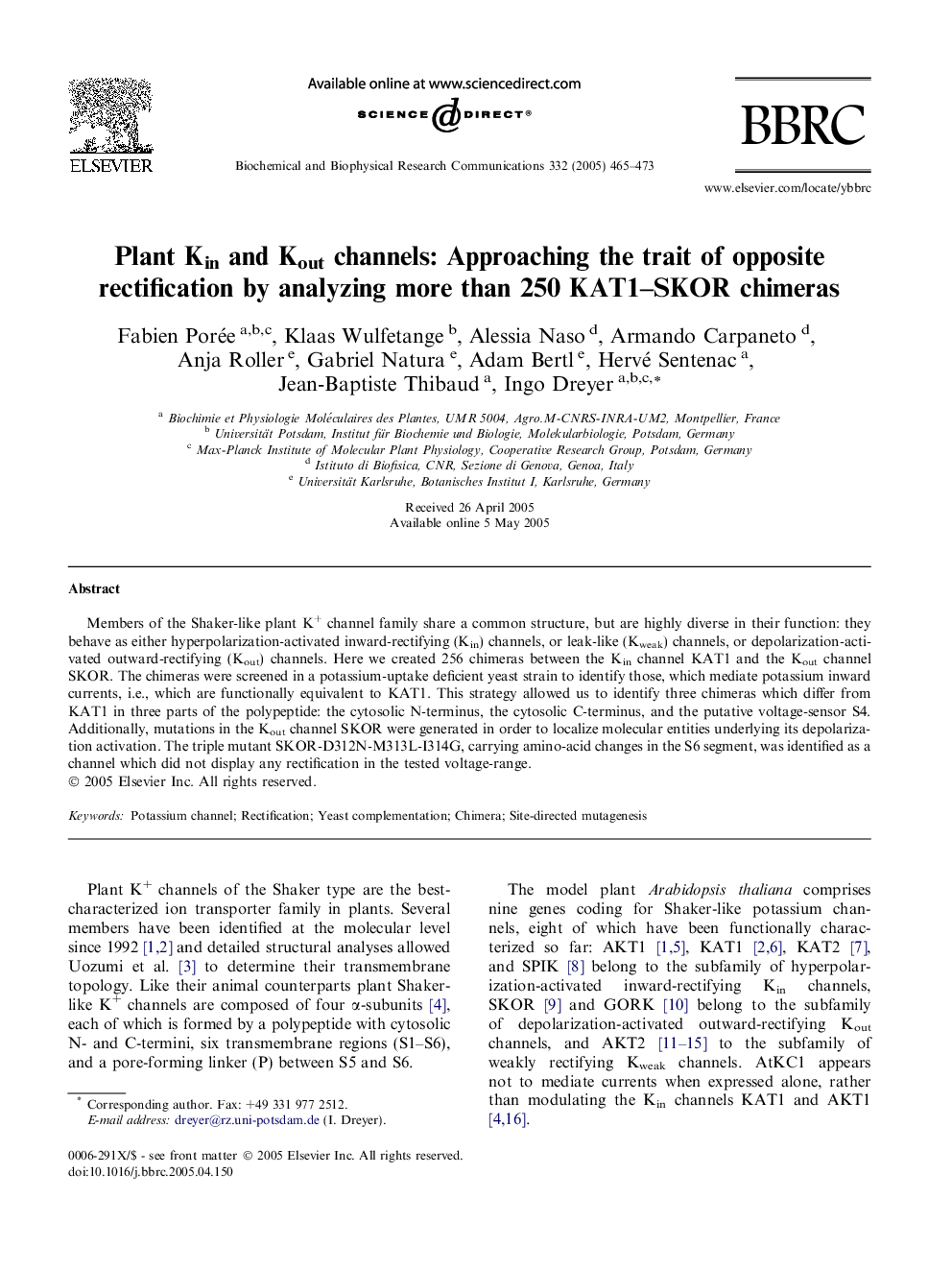| Article ID | Journal | Published Year | Pages | File Type |
|---|---|---|---|---|
| 10768514 | Biochemical and Biophysical Research Communications | 2005 | 9 Pages |
Abstract
Members of the Shaker-like plant K+ channel family share a common structure, but are highly diverse in their function: they behave as either hyperpolarization-activated inward-rectifying (Kin) channels, or leak-like (Kweak) channels, or depolarization-activated outward-rectifying (Kout) channels. Here we created 256 chimeras between the Kin channel KAT1 and the Kout channel SKOR. The chimeras were screened in a potassium-uptake deficient yeast strain to identify those, which mediate potassium inward currents, i.e., which are functionally equivalent to KAT1. This strategy allowed us to identify three chimeras which differ from KAT1 in three parts of the polypeptide: the cytosolic N-terminus, the cytosolic C-terminus, and the putative voltage-sensor S4. Additionally, mutations in the Kout channel SKOR were generated in order to localize molecular entities underlying its depolarization activation. The triple mutant SKOR-D312N-M313L-I314G, carrying amino-acid changes in the S6 segment, was identified as a channel which did not display any rectification in the tested voltage-range.
Related Topics
Life Sciences
Biochemistry, Genetics and Molecular Biology
Biochemistry
Authors
Fabien Porée, Klaas Wulfetange, Alessia Naso, Armando Carpaneto, Anja Roller, Gabriel Natura, Adam Bertl, Hervé Sentenac, Jean-Baptiste Thibaud, Ingo Dreyer,
